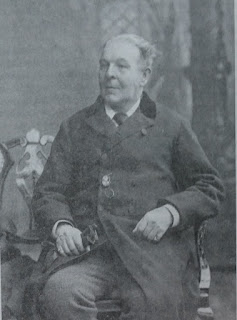A mother and daughter were killed instantly when a cask fell from a warehouse window, leading to the owner being convicted of manslaughter.
On Friday 10th August 1832 forty six year old Margaret Kearsley, the wife of a coal merchant who resided in Beau Street, went into Liverpool with her fifteen year old daughter, also named Margaret. On their way home, they turned from Dale Street into Byrom Street only for the terrible tragedy to strike. As they passed the warehouse of Rigmaiden's wine merchants, a cask fell from a height of four storeys straight onto the head of the daughter, removing the scalp of the mother as it did so.
Both women were crushed into the earth. Miss Kearsley convulsed briefly with blood coming from her mouth then she immediately expired. Mrs Kearsley showed some signs of life and she was rushed to a surgery in Dale Street, but she was beyond recovery.
Mrs Kearsley was described by the Liverpool Mercury as a healthy elegant woman. The paper commented that 'we never remember any accident that produced a deeper feeling of sorrow and consideration in the public mind.' Calling for a change in the law so that warehouse owners would be compelled to employ someone on the ground warning passers by to cross the road, it lamented the 'culpable carelessness' of Mr Rigmaiden.
The day after the deaths an inquest was opened and then adjourned until the Monday. A baker named Mr Worthington said that he had seen Rigmaiden struggling to get the cask into the door and that he was trying to turn it another way. It was held, he said, by just a single rope. A labourer named John Mahoney told how he heard someone comment how dangerous it was to hoist the cask using just the rope and no hooks. When he was taken into custody, Rigmaiden said that the cask had got caught on a sack of flour and as he tried to adjust its position, it slipped through the rope and fell.
The inquest returned a verdict of manslaughter and the following day Rigmaiden, described as now being in a state of deepest depression, travelled to Lancaster Castle to be tried at the ongoing assizes. His case was heard on 16th August and in his defence he said that he hoisted the cask in a manner that he always had done. He also said how he wished he had been the victim of the accident due to the anxiety and suffering he had endured. The Mercury reported that Rigmaiden was in a state of great agitation during his trial.
Statements of good character were made by several local gentlemen, including the Treasurer of the Parish of Liverpool. After a short consultation the jury found Rigmaiden guilty but recommended mercy, leading to the judge imposing a sentence of one months imprisonment.













